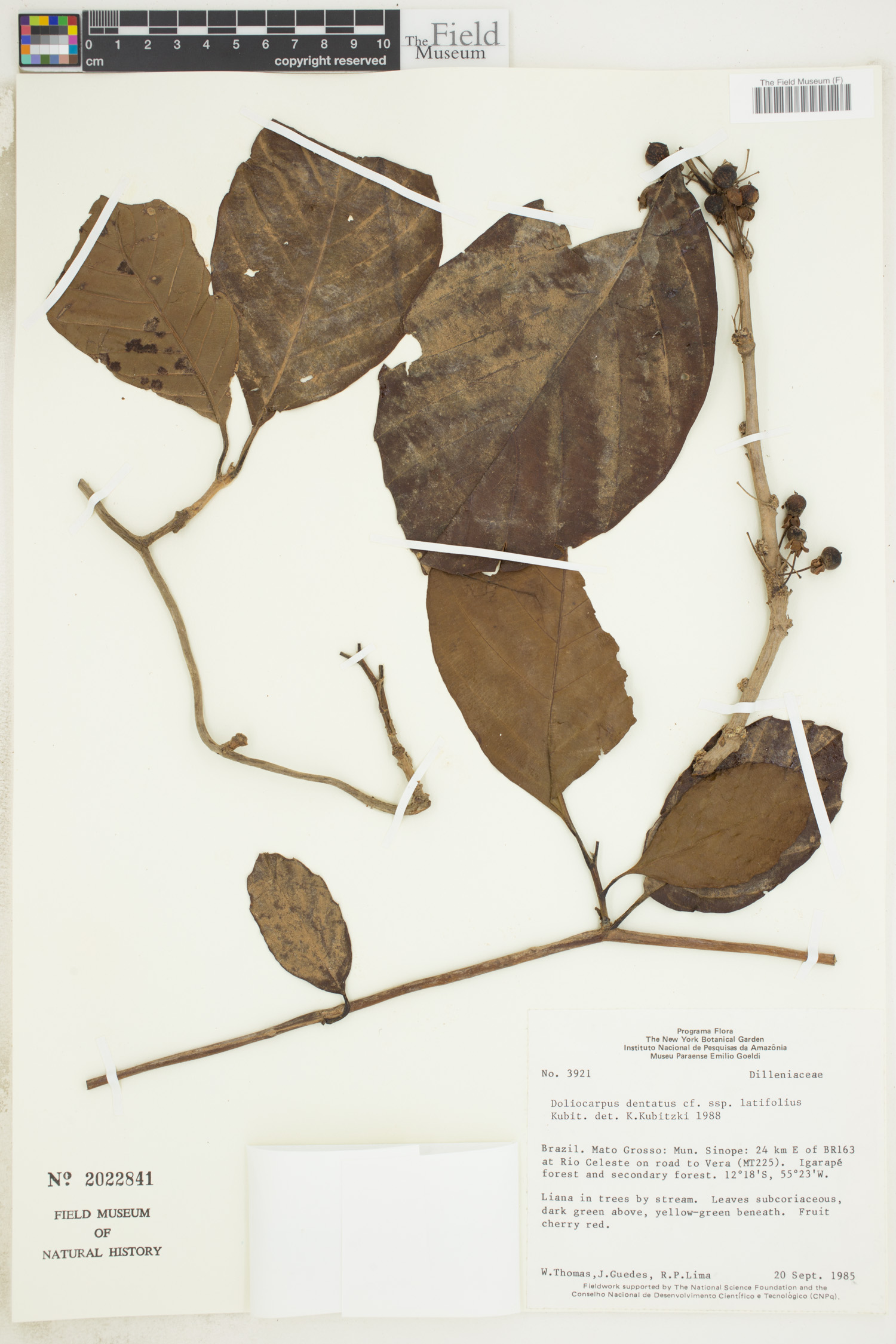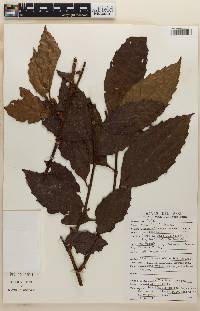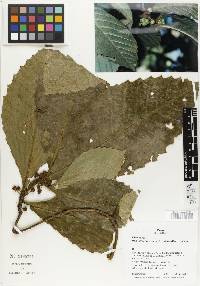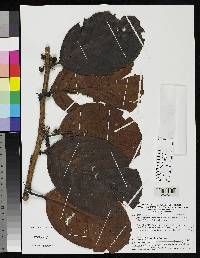
Neotropical Flora
|
Family: Dilleniaceae
|
Liana; younger parts appressed-pubescent with long slender trichomes especially on stems, petioles, and major veins of leaves, glabrate in age. Petioles 5-15 mm long, narrowly winged; blades +/- elliptic to obovate or oblanceolate, acuminate, acute to obtuse at base, 7-20 cm long, 3-7 cm wide. Glomerules dense, at usually leafless axils; pedicels 5-10 mm long in flower, to 25 mm long in fruit; flowers 5-8 mm broad; sepals 3-5, obovate, to 5 mm long, slightly pubescent outside, glabrous to slightly pubescent inside; petals 5, white, 4-5 mm long; stamens numerous, sometimes persisting; ovary 1, glabrous; style to 1.5 mm long; stigma peltate, often persisting. Fruits globose, 6-9 mm diam, glabrous, red, dehiscing regularly along median suture, the valves remaining intact; seeds 2, ca 5 mm long, enveloped except at apex by the fleshy white aril. Croat 5144, 9516. Frequent in the forest and at the edge of the lake; sometimes locally common at the top of the canopy. Flowers throughout the dry season, from December to April, but particularly in February. The fruits mature in central Panama from March to May (possibly later), chiefly in April. At least some individuals may flower more than once per season, with individuals flowering in March or April already bearing fruits from an earlier flowering. The fruits were reported to be indehiscent by Hunter in the Flora of Panama (1965). They are smaller and more numerous than for any other species of Doliocarpus. |
Powered by Symbiota.







































































